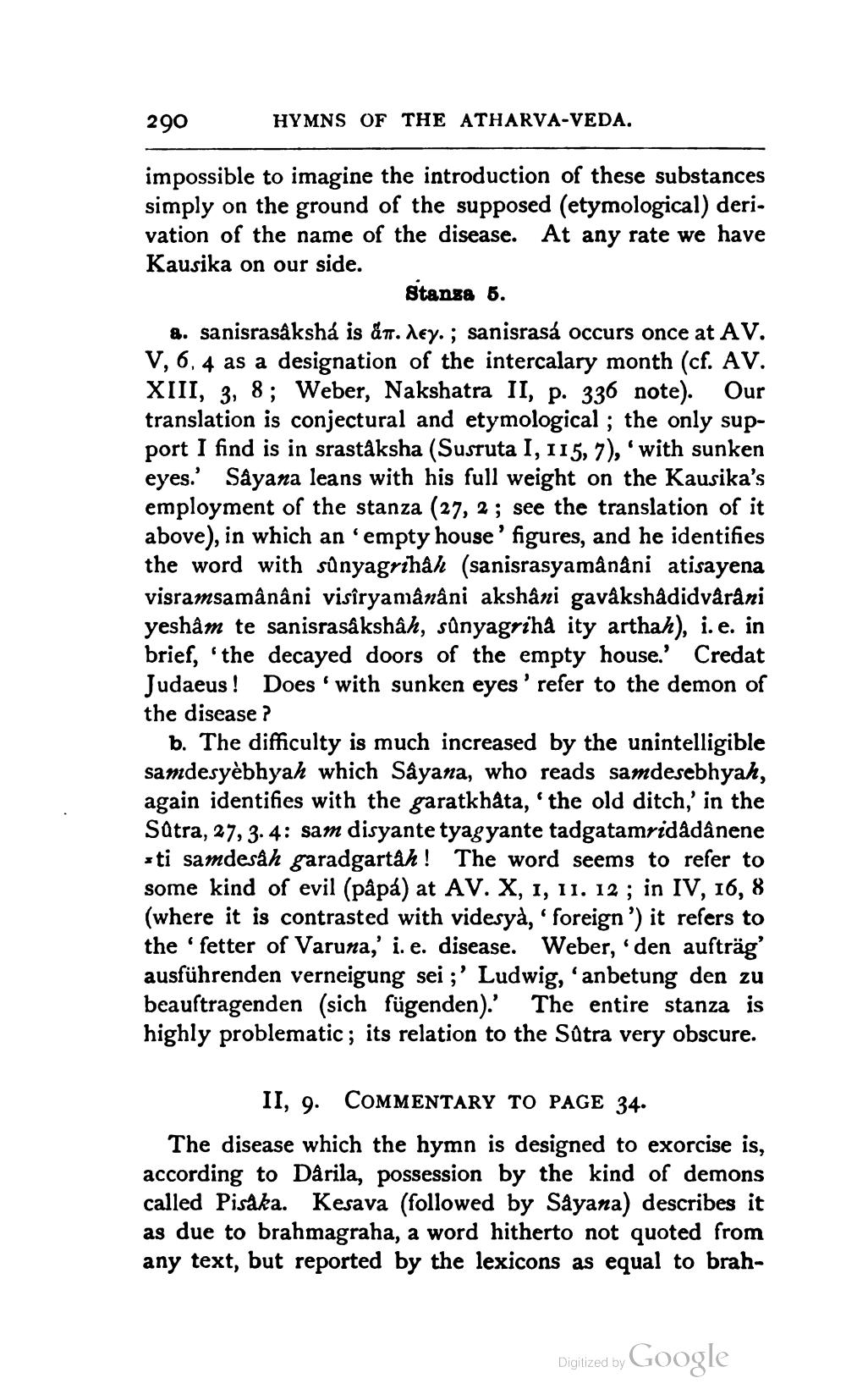________________
290
HYMNS OF THE ATHARVA-VEDA.
impossible to imagine the introduction of these substances simply on the ground of the supposed (etymological) derivation of the name of the disease. At any rate we have Kausika on our side.
stanza 5. 8. sanisrasåkshá is ån. dey. ; sanisrasá occurs once at AV. V, 6.4 as a designation of the intercalary month (cf. AV. XIII, 3, 8; Weber, Nakshatra II, p. 336 note). Our translation is conjectural and etymological ; the only support I find is in srastāksha (Susruta I, 115, 7), 'with sunken eyes.' Sayana leans with his full weight on the Kausika's employment of the stanza (27, 2; see the translation of it above), in which an empty house' figures, and he identifies the word with súnyagrihah (sanisrasyamânâni atisayena visramsamânâni visîryamânâni akshani gavakshadidvårani yeshâm te sanisrasåkshah, súnyagriha ity arthak), i.e. in brief, 'the decayed doors of the empty house.' Credat Judaeus! Does with sunken eyes' refer to the demon of the disease?
b. The difficulty is much increased by the unintelligible samdesyèbhyah which Sayana, who reads samdesebhyah, again identifies with the garatkhata,' the old ditch,' in the Satra, 27, 3.4: sam disyante tyagyante tadgatamridadânene sti samdesåh garadgartäh! The word seems to refer to some kind of evil (påpá) at AV. X, 1, 11. 12 ; in IV, 16, 8 (where it is contrasted with videsyà, 'foreign') it refers to the 'fetter of Varuna,' i. e. disease. Weber, den aufträg’ ausführenden verneigung sei ;' Ludwig, 'anbetung den zu beauftragenden (sich fügenden).' The entire stanza is highly problematic; its relation to the Satra very obscure.
II, 9. COMMENTARY TO PAGE 34. The disease which the hymn is designed to exorcise is, according to Darila, possession by the kind of demons called Pisaka. Kesava (followed by Sayana) describes it as due to brahmagraha, a word hitherto not quoted from any text, but reported by the lexicons as equal to brah
Digized by Google




